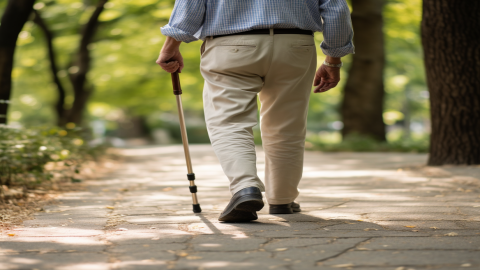What activities should patients with gallstones do?
Generally, patients with gallstones should choose physical activities that are low-intensity, do not increase intra-abdominal pressure, and avoid triggering biliary spasm. Suitable options include slow walking, tai chi, swimming, yoga, and indoor cycling. Detailed explanations are as follows:

1. Slow walking: A safe and basic form of exercise. It is recommended to walk for 30–40 minutes per session at a pace of 80–100 steps per minute. This promotes gastrointestinal motility and gradual bile drainage, helping prevent bile stasis and further stone formation. As it does not involve vigorous movement, it avoids provoking gallbladder contraction or spasm, making it especially suitable for asymptomatic or mild cases as part of daily exercise.
2. Tai Chi: A low-intensity mind-body exercise characterized by slow, continuous movements centered on the waist to engage limb motion. It improves abdominal circulation through regulated breathing, avoids sudden increases in intra-abdominal pressure, and helps relieve anxiety. It is appropriate for patients at all stages of gallstone disease, particularly older adults.
3. Swimming: The buoyancy of water reduces joint strain. Horizontal stroke styles such as slow breaststroke or freestyle allow full-body muscle training and improved metabolism without increasing abdominal pressure. However, breath-holding dives or other maneuvers that may elevate intra-abdominal pressure should be avoided. Swimming duration should be limited to 20–30 minutes to prevent excessive fatigue.
4. Yoga: Poses that do not compress the abdomen—such as Cat Pose, Child’s Pose, and Seated Wide-Angle Pose—can gently stretch muscles and improve blood circulation in the waist and abdomen, aiding bile drainage. Poses requiring significant abdominal effort—like Boat Pose or Wheel Pose—should be avoided to prevent stimulating gallbladder contraction and causing pain. Each session should last about 20–25 minutes.
5. Indoor cycling: Stationary biking promotes whole-body metabolism through lower-limb movement. Set the resistance to a low level and cycle for 25–30 minutes per session, avoiding high-intensity sprints. This achieves fitness goals while minimizing risks of increased abdominal pressure or jolting motions that could trigger gallbladder discomfort.
Patients with gallstones must strictly avoid strenuous exercise and any movements that put pressure on the abdomen. Exercise intensity should be guided by the absence of post-activity abdominal pain or fatigue. Asymptomatic patients may engage in regular daily activity, but physical exercise should be suspended during acute episodes, with bed rest advised. Exercise plans should be individualized according to one's condition and developed under the guidance of a physician or rehabilitation specialist to ensure both safety and effectiveness.






